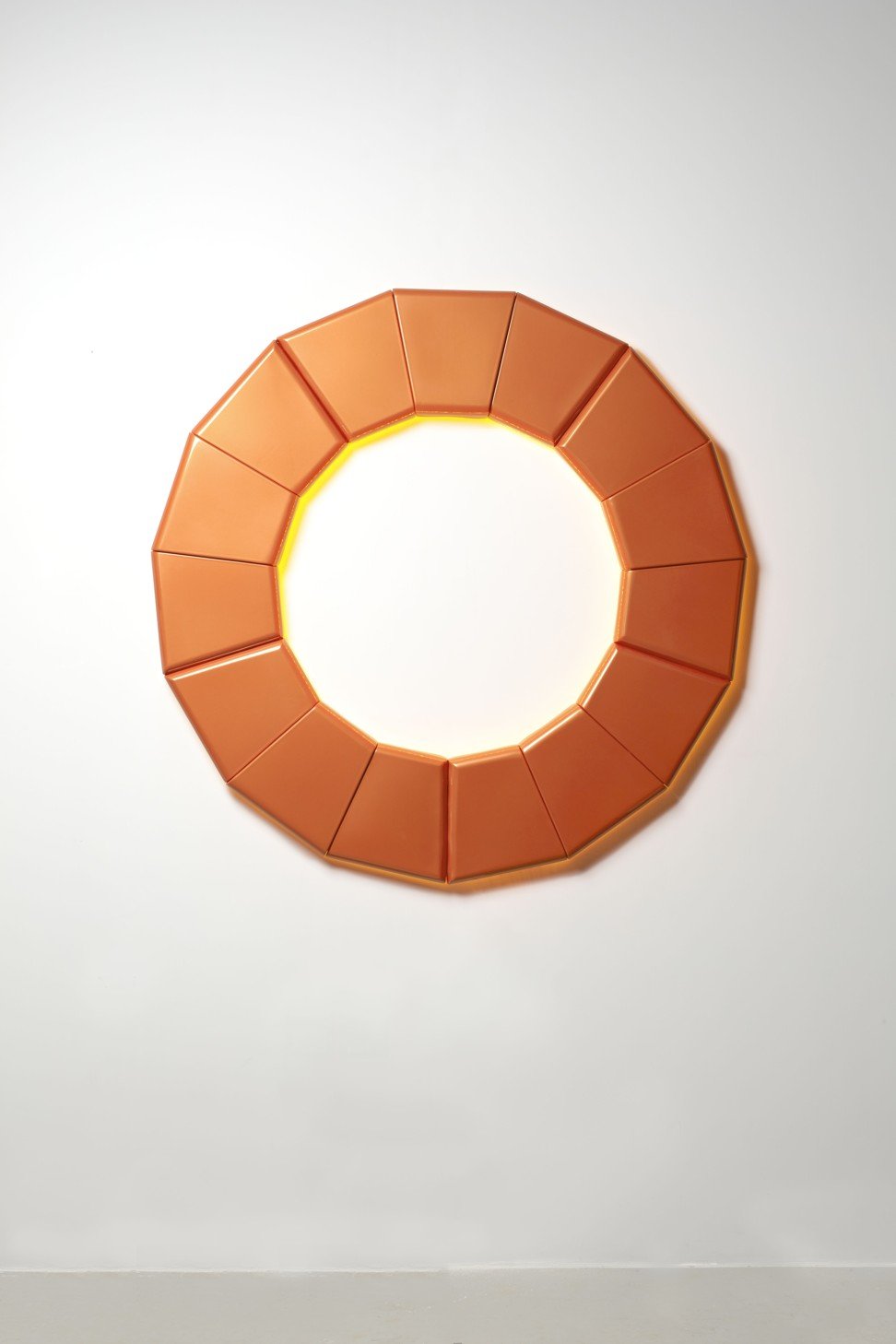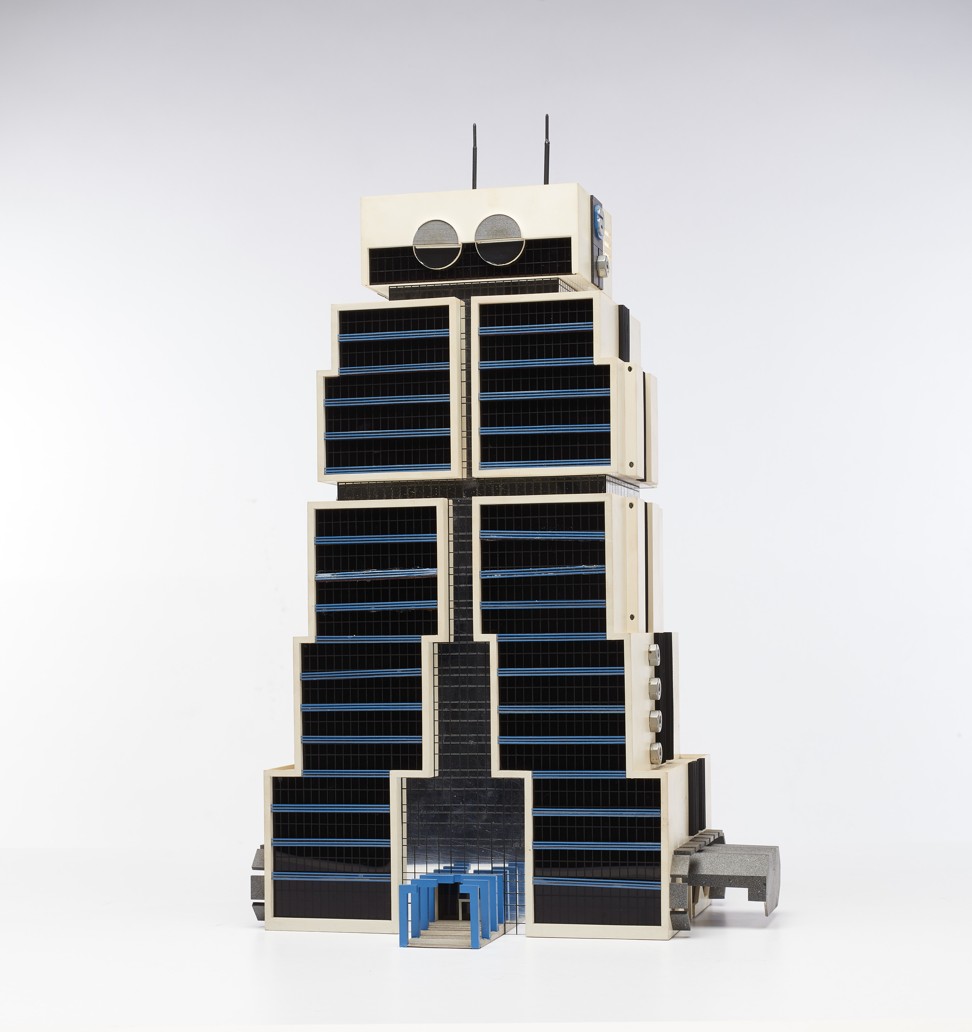
A fresh take on Southeast Asian art, design and architecture in show at Hong Kong’s M+ Pavilion
From Bangkok’s ‘Robot Building’ to a ring of wall-mounted seats from a Singapore bus stop, exhibition at M+ Pavilion shows what Hong Kong’s future museum of visual culture is all about
It would be taxing to put together an exhibition that encompasses the heterogeneity of Southeast Asia under any circumstance. Holding such a show at Hong Kong’s bijou M+ Pavilion makes it doubly so, especially when the exhibition spans the realms of visual art, design and architecture.
“In Search of Southeast Asia Through the M+ Collections” may be far from encyclopedic, but it is the most comprehensive demonstration so far of what the city’s future M+ museum of visual culture in the West Kowloon Cultural District is about: discovering nuances, undiscovered viewpoints and the porousness of modern and contemporary Asian culture through different kinds of visual media.
As Southeast Asian art grows in stature, Hong Kong becomes focal point for top auction houses bidding to boost their sales
The exhibition is divided into three sections. The first, called “Conditions of Place”, includes works based on elements specific to their local context but bound together by an awareness of the tension that exists between tradition and development.

Chun Kai-feng’s Nothing To Wait For (2013) is a ring hanging on the wall made with exact copies of the ubiquitous, orange plastic seats found in Singapore’s bus stops. The backlighting and the shape of the perfect circle give the assemblage of ordinary objects an air of spiritual mystique, which the title promptly debunks.
Sopheap Pich’s Compound (2011) is also a response to an Asian urban landscape. It is a modular sculpture made by combining woven pieces of bamboo and rattan that are reminiscent of traditional forms such as baskets and fish traps. The artist began the series as a response to the rapid urbanisation of Phnom Penh when he returned to the Cambodian capital after two decades in the United States.

The section includes design ideas adapted to the local climate and videos such as The Propeller Group’s The Living Need Light, The Dead Need Music (2014), a surreal blend of Vietnamese religious rituals and pop music videos that explores the hinterland between mainstream society and its fringes.
The next section, “States and Powers”, focuses on the nation-building exercises of newly independent sovereign states from the 1950s. Architectural drawings and models tell of the single-minded pursuit of modernity and post-colonial authority that swept through the region. There was still room for idiosyncrasies, such as Sumet Jumsai’s Bangkok headquarters for the Bank of Asia, popularly known as the “Robot Building” since its construction in 1985.

Finally, “Transnational Flows” looks at the cross-fertilisation of ideas and cultural symbols in the region, including Hong Kong, which the curators have included deliberately to turn the city away from its default gaze to the north.
For example, Wilson Shieh Ka-ho’s Angkor Quartet (2004) is based on Wong Kar-wai’s In the Mood for Love (2000), a film that was set in 1962 when Hong Kong had a greater awareness of its cultural ties to Nanyang, as Chinese call Southeast Asia.
The M+ collection doesn't include a lot of objects and archival materials by Southeast Asians at the moment: 134 "objects" and four archives containing 338 items, or just 10 per cent of the total collection. Suhanya Raffel, executive director of M+, says the museum has been devoting more attention to the region through acquisitions, research and public programmes in the last couple of years. But she wants to steer clear of a "strict, regional strategy" that ignores the movement of people and ideas between countries. The world is more porous than ever before, and people's lives and work are increasingly unfettered by national bounderies, she says, and the museum's own footprint has to reflect such fluidity.
THE MUSEUMS BEHIND THE MURMURS OF A SOUTHEAST ASIAN RENAISSANCE
The exhibition makes a convincing case for the M+ way of seeing art. It is by definition anti-canonical, so there is little here that would be familiar to non-specialists despite it covering a huge period from the 1930s to the present. The small space also means that larger works such as Sopheap Pich’s can only be partially displayed.
As a long-awaited sneak peek at the museum’s sizeable collection, it may come across as visually underwhelming and too bookish. But visitors who show a little bit of patience will be well rewarded.
In Search of Southeast Asia through the M+ Collections, M+ Pavilion, West Kowloon Cultural District, 11am-6pm, Wed-Sun and public holidays. Until September 30.

